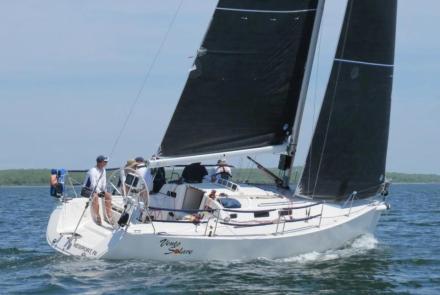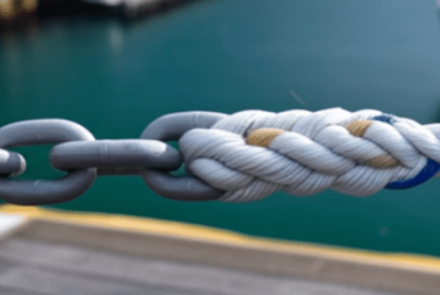Lessons Learned from Ocean Races
Safety Moment, Cruising Club of America
Chuck Hawley
Every even-numbered summer, three trans-Pacific race fleets depart from the West Coast and travel approximately 2300 nautical miles to Hawaii: the Pacific Cup, the Singlehanded Transpac, and the Victoria to Maui Race. As with any long-distance race, there are lessons to be learned as the stories are told at the finish line (and occasionally NOT at the finish line for some unfortunate vessels.) Sometimes it’s an individual boat or crew problem, and sometimes the problem affects the entire fleet. Steve Chamberlin is the Staff Commodore of the Pacific Cup Yacht Club, and he’s offered the following items (modified somewhat by the author) regarding what he learned as a result of this year’s Pacific Cup Yacht Race. For those of you who don’t know, this was an extremely windy year, with many records broken, including a Moore 24 that finished in just over 10 ½ days, averaging close to 200nm per day.
- The Race Committee arranged to have a telemedicine company on-call for all racers. The company, GW Medical Faculty Associates, offered access to their Marine Medical Access services for a very reasonable price, and several vessels needed to take advantage of the service. Even boats that did not need to consult with MMA felt more confident having this as an option. Steve recommends that the participants in the race complete HIPPA delegation forms to ensure there is no issue with privacy, and that the service be offered to those racing and those delivering boats back from the race.
- Boats that dropped out of the race did not check-in using normal roll call methods, and thus were invisible to the Race Committee. Steve recommends that all vessels be required to check-in whether racing or having retired.
- Autopilot failures were common, and since double-handed and triple-handed boats are common, a failure can put unanticipated burdens on the crew. While many of us use autopilots for an occasional trip up or down the coast, the strain of using one for days on end proved too much for the smaller pilots.
- All vessels were equipped with a tracking device so vessel location was not a problem. However, since the race allowed various means of communicating with the fleet, the Race Committee had no consistent way of pushing information to the fleet when Tropical Storm Darby threatened. Steve feels that all vessels should have a consistent way of receiving reports from the Race Committee about weather or other issues that could put vessels at risk.
- As in the 2014 race, at least one boat benefitted from having a fuel transfer at sea to ensure that it could reduce the time spent at sea under jury rig. Fuel extraction generally requires a custom solution based on the particular vessel. While jerry jugs may be an acceptable intermediate storage solution between vessels, how in the heck to you remove fuel from the donor? Should having a plan for transferring fuel be a required capability of racing yachts?
- The requirement to carry two anchors and rode across 2300 miles of deep ocean seems a little ridiculous, until it came time to anchor at Kaneohe (or another landfall). Several boats with lightweight and possibly undersized anchors did not stay put as the tropical storms brought heavy, shifting winds to the anchored fleet.
The CCA Safety at Sea Committee should be proud of its history of documenting what went wrong and what the likely solutions might be for the Bermuda Race. It’s great to see other races that take safety seriously, and that help us all to be better sailors.




